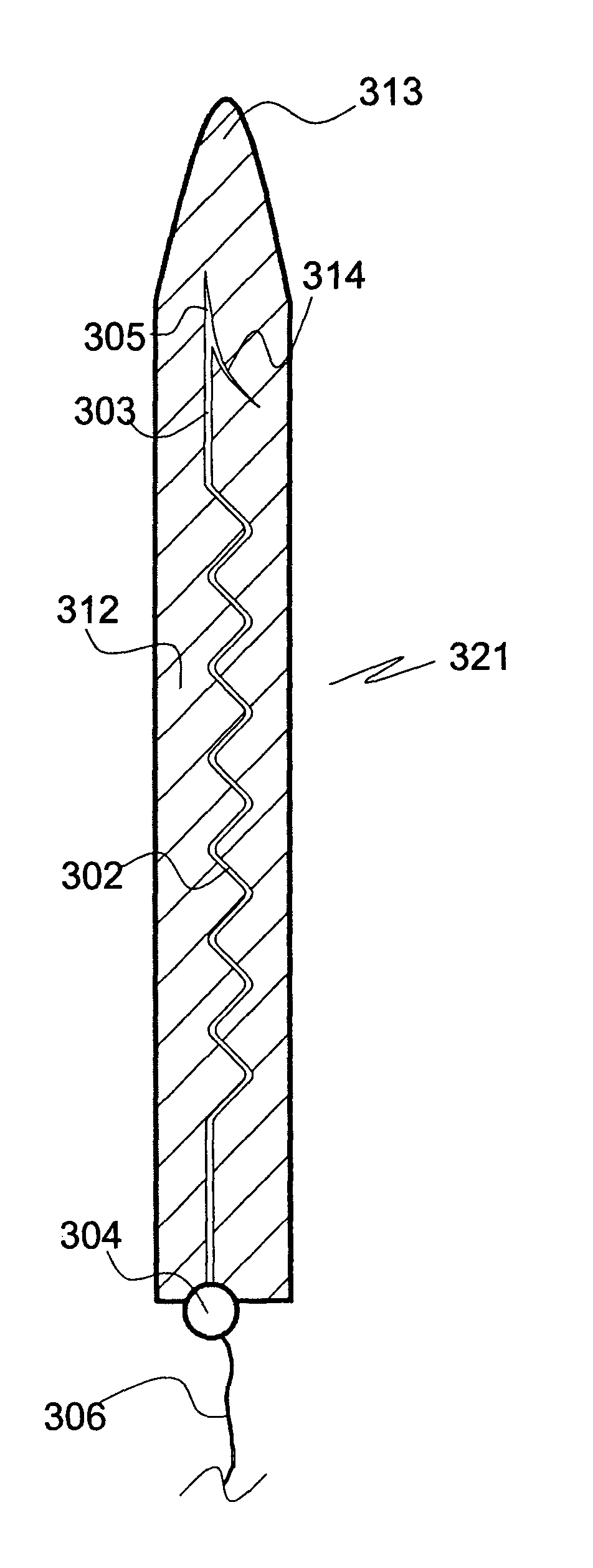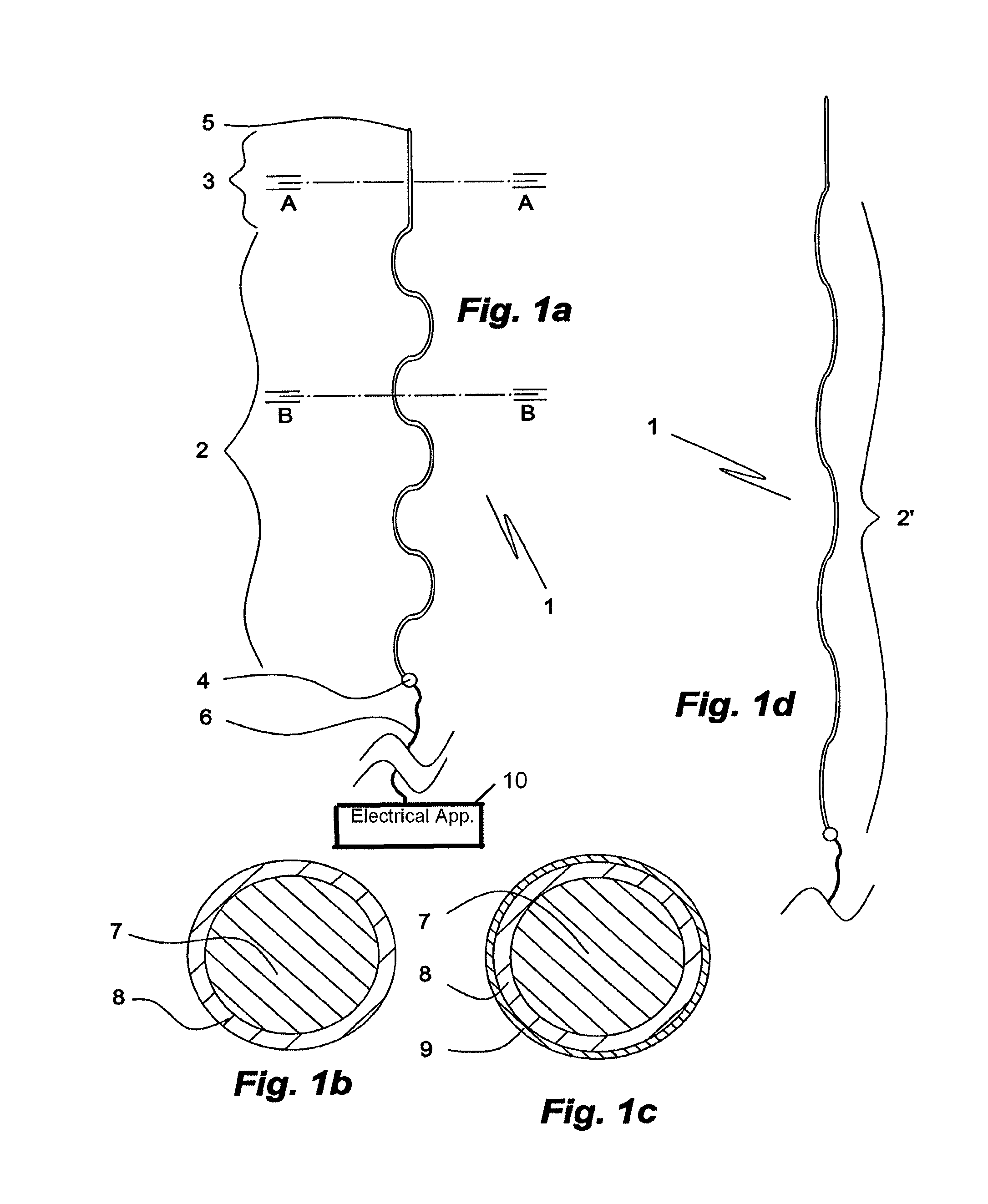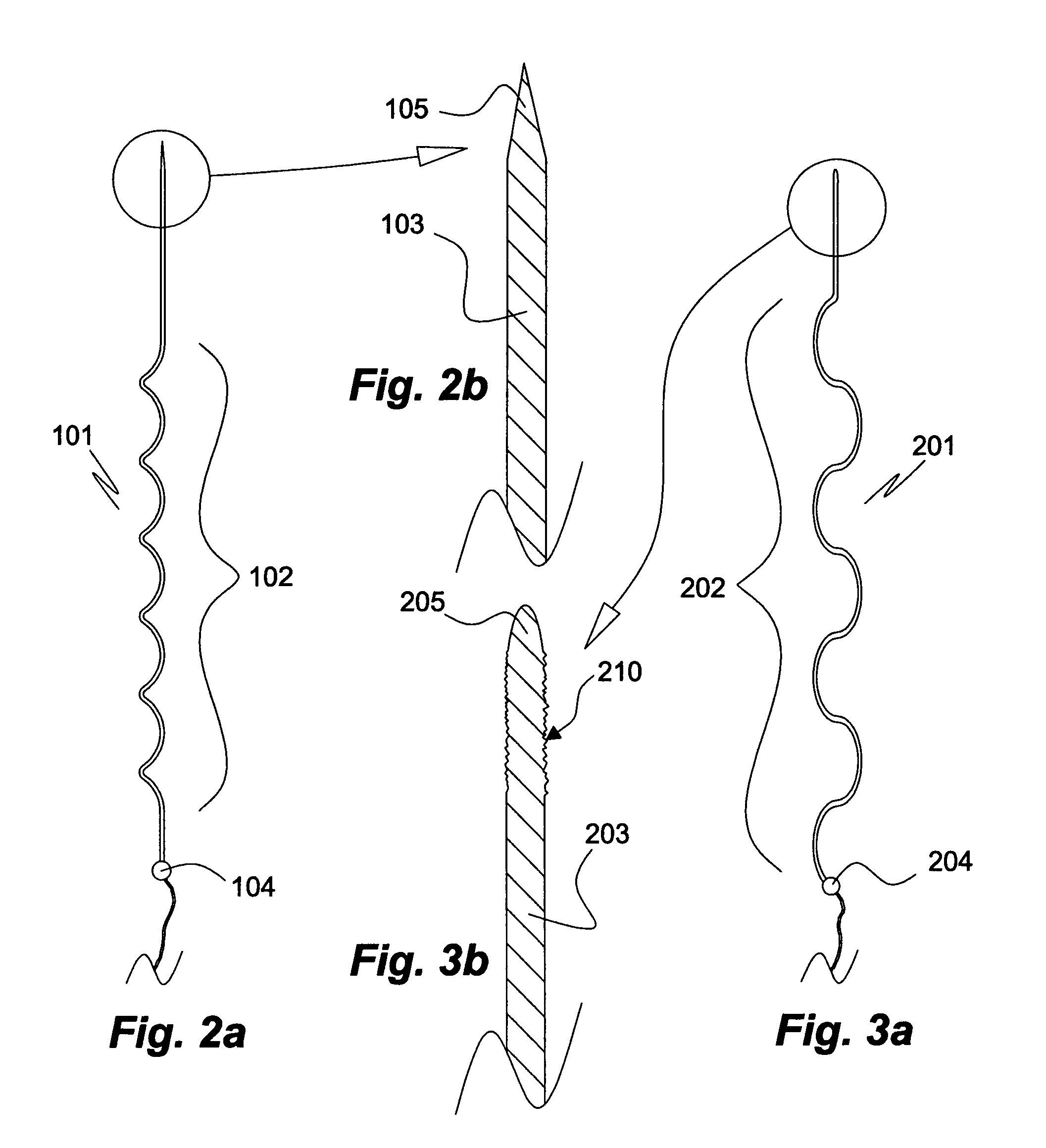Medical electrode, electrode bundle and electrode bundle array
a technology of electrode bundles and electrode bundles, applied in the field of medical electrodes, can solve the problems of non-uniform or radiating movement around the arteries, reduce the quality of recordings/stimulations, injure the tissue, etc., and achieve the effect of easy dislocation
- Summary
- Abstract
- Description
- Claims
- Application Information
AI Technical Summary
Benefits of technology
Problems solved by technology
Method used
Image
Examples
first embodiment
[0067]a matrix-embedded bundle 411 of four electrodes of the invention is shown in FIGS. 5a, 5b. The electrodes, which are of the kind of the electrode 101 of FIGS. 2a, 2b, are disposed in parallel and equidistantly from the rotational axis S of the bundle 411 in a dissolvable matrix body 412. In respect of the electrode body 402a of the first electrode, the bodies 402b, 402c, 402d of the other electrodes are disposed in an angle of 90°, 180° and 240°, respectively. In FIG. 5a the tip sections 403a, 403c and the bases 404a, 404c of the first and third electrodes, respectively, are also shown. The generally cylindrically tapering matrix body 412 tapers in a distal direction, only slightly at start but more pronounced towards its distal pointed end 413.
second embodiment
[0068]a matrix-embedded bundle 511 of four electrodes of the invention shown in FIG. 6 comprises four electrodes of the kind disclosed in FIGS. 2a, 2b and in the same disposition in respect of a rotational axis S′ as in the matrix-embedded electrode bundle 411 of FIGS. 5a, 5b. In contrast to the embodiment of FIGS. 5a, 5b the matrix body comprises two sections, a proximal section 512′ enclosing the electrode bodies 502a, 502c, etc., and a distal section 512″ enclosing their tip sections 503a, 503c. The dissolution rate of the proximal matrix body section 512′ is slower than that of the distal matrix body section 512″. This allows insertion of the entire matrix-embedded bundle 511 to a desired first depth or level of a soft tissue and, upon dissolution of the distal section 512″ material further insertion to a second depth or level, during which the now unsupported tips sections 503a etc. of the first electrode 502a, 503a, 504a and of the other electrodes are no longer immobilized bu...
third embodiment
[0071]the electrode bundle of the invention shown in FIG. 13 comprises four electrodes with extendible electrode bodies 802a, 802c attached to bases 804a, 804c. The bundle is embedded in a dissolvable matrix body 812 narrowing towards its distal tip 813. The electrode bases 804a, 804c are moulded in an electrode holder disk 807 from which their rear portions provided with conductors 806a, 806c extend. The electrode holder disk 807 is made of a non-conducting polymer material. This embodiment allows to keep the proximal portions of the electrodes at a desired distance, whereas their distal portions can move more freely.
[0072]A third embodiment of the electrode bundle array 920 of the invention is shown in FIG. 9. It differs from the electrode bundle array 620 of FIGS. 7a, 7b in that electrodes of the invention with tip sections 903a, 903c of different length and electrode bodies 902a, 902c of same length are comprised by a first electrode bundle embedded in a matrix 912a, and that a ...
PUM
 Login to View More
Login to View More Abstract
Description
Claims
Application Information
 Login to View More
Login to View More - R&D
- Intellectual Property
- Life Sciences
- Materials
- Tech Scout
- Unparalleled Data Quality
- Higher Quality Content
- 60% Fewer Hallucinations
Browse by: Latest US Patents, China's latest patents, Technical Efficacy Thesaurus, Application Domain, Technology Topic, Popular Technical Reports.
© 2025 PatSnap. All rights reserved.Legal|Privacy policy|Modern Slavery Act Transparency Statement|Sitemap|About US| Contact US: help@patsnap.com



